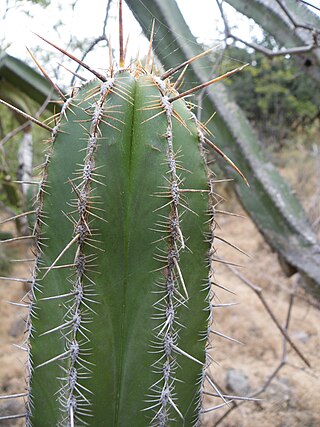
Escontria is a genus of cactus. The only species is Escontria chiotilla, the chiotilla or jiotilla.

Cleistocactus hyalacanthus is a species of columnar cacti in the genus Cleistocactus. The name comes from the Greek kleistos meaning closed because the flowers hardly open.
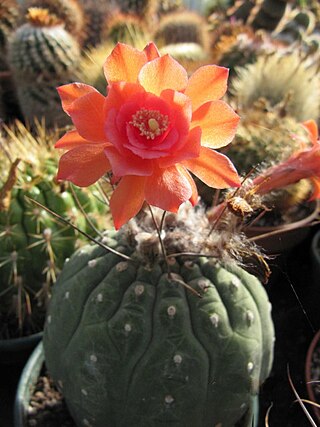
Matucana aurantiaca is a species of flowering plant in the cactus family Cactaceae. It grows in the Cajamarca and La Libertad regions of Peru. It is considered to have a stable population and a wide range with no threats.

Weberbauerocereus cuzcoensis is a species of Weberbauerocereus from Peru.

Weberbauerocereus rauhii is a species of Weberbauerocereus from Peru.

Lobivia pentlandii, is a species of Lobivia found in Bolivia and Peru.

Lobivia pampana is a species of Lobivia found in Peru.

Melocactus neryi is a species of flowering plant from the genus Melocactus.

Haageocereus decumbens is a species of Haageocereus found in S. Peru to Chile (Tarapacá)
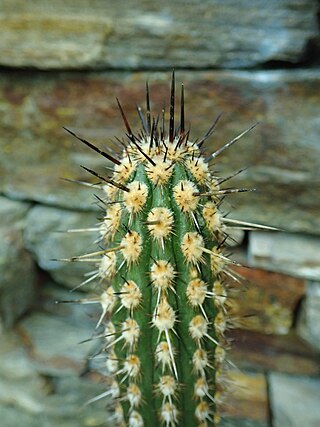
Weberbauerocereus cephalomacrostibas is a species of cactus in the family Cactaceae. It is found in Arequipa Department, Peru and consists of 2 subpopulations.

Matucana weberbaueri is a species of Matucana found in Peru.
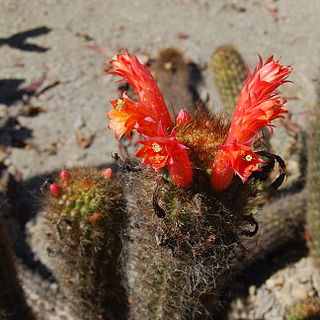
Loxanthocereus acanthurus is a species of Loxanthocereus found in Peru.

Weberbauerocereus albus is a species of Weberbauerocereus from Peru.

Weberbauerocereus winterianus is a species of Weberbauerocereus from Peru.
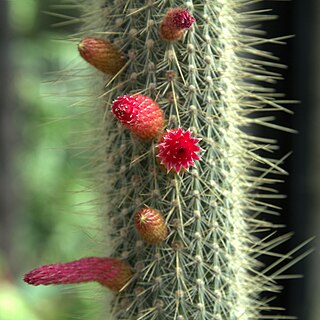
Cleistocactus parviflorus is a species of columnar cacti in the genus Cleistocactus.
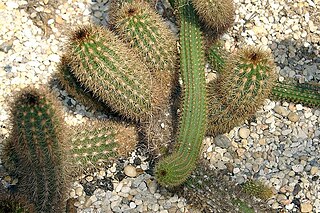
Haageocereus acranthus is a species of Haageocereus found in Peru.

Oreocereus leucotrichus is a species of cactus native to Peru and Chile.
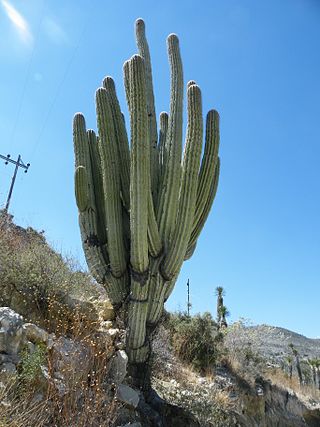
Cephalocereus fulviceps is a species of Cephalocereus from Mexico.

Cephalocereus tetetzo is a species of cactus from Mexico.
Weberbauerocereus churinensis is a species of cactus in the genus Weberbauerocereus, native to Peru.




















